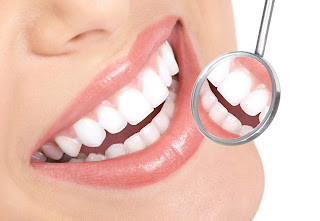The successful use of single-tooth restorations is based on thoughtful treatment planning, which is manifested by choosing a restorative material and design that are suited to the needs of the patient. In a time when production and efficiency are heavily stressed, it should be restated that the needs of the patient take precedence over the convenience of the dentist. The selection of the material and design of the restoration is based on several factors:
1.
Destruction of tooth structure. If the amount of destruction previously suffered by the tooth to be restored is such that the remaining tooth structure must gain strength and protection from the restoration, cast metal or ceramic is indicated over amalgam or composite resin.
2.
Esthetics. If the tooth to be restored with a cemented restoration is in a highly visible area, or if the patient is highly discriminating, the esthetic effect of the restoration must be considered. Sometimes a partial coverage is required in such an area, the use of ceramic in some form is indicated. Metal-ceramic crowns can be used for single-unit anterior or posterior crowns, as well as for fixed partial denture retainers. All-ceramic crowns are most commonly used on incisors, although they can be used on posterior teeth when an adequate amount of tooth structure has been removed and the patient is willing to accept the possibility of more frequent replacement.
3.
Plaque control. The use of a cemented restoration demands the institution and maintenance of a good plaque-control program to increase the chances for success of the restoration. Many teeth are seemingly prime candidates for cast metal or ceramic restorations, based solely on the amount of tooth destruction that has previously occurred. However, when these teeth are evaluated from the standpoint of the oral environment, they may, in fact, be poor candidates for cemented restorations. If extensive plaque, decalcification, and caries are present in a mouth, the use of crowns of any kind should be carefully weighed. The design of a restoration should take into account those factors that will be enable the patient to maintain adequate hygiene to make the restoration successful. The patient must be motivated to follow a regimen of brushing, flossing, and dietary regulation to control or eliminate the disease process responsible for destruction of tooth structure. It may be desirable to use pin-retained amalgam provisional restorations to save the teeth until the conditions responsible for the tooth destruction can be controlled. This will give the patient the time necessary to learn and demonstrate good oral self-care. It will also permit the dentist and staff to reinforce the skills required of the patient and to evaluate the patient's willingness and ability to cooperate. If these measures prove successful, cast metal, ceramic, or metal-ceramic restorations can be fabricated. Because these restorations are used to repair the damage caused by caries and do nothing to cure the condition responsible for the caries, they should not be used if the oral environment has not been brought under control.

4.
Financial considerations. Finances influence all treatment plans because someone must pay for the treatment. That may be a government agency, a branch of the military, an insurance company, and/or the patient. If the patient is to pay, the dentist should provide good advice and then allow the patient to make the choice. A conscientious dentist must walk a fine ethical line. On the one hand, a dentist should not preempt the choice by selecting a less-than-optimum restoration just because he or she thinks that the patient cannot afford the optimum treatment. On the other hand, a dentist should be sensitive enough to the individual patient's situation to offer a sound alternative to the optimum treatment plan and not apply pressure.
5.
Retention. Full coverage crowns are unquestionably the most retentive. However, maximum retention is not nearly as important for single-tooth restorations as it is for fixed partial denture retainers. It does become a special concern for short teeth and removable partial denture abutments.
References:
http://cdn3.buzztides.com/wp-content/uploads/2016/03/teeth.jpg
http://randental.com/wp-content/uploads/2011/03/iStock_000013325752Medium.jpg
http://69.89.31.84/~smilesf5/wp-content/uploads/2013/08/dental-scaling.jpg
http://mikeiamele.com/wp-content/uploads/2014/11/Money-Bag.jpg
"Fundamentals of Fixed Prosthodontics" Fourth Edition by Herbert T. Shillingburg, Jr, DDS; David A. Sather, DDS; Edwin L. Wilson, Jr, DDS, MEd; Joseph R. Cain, DDS, MS; Donald L. Mitchell, DDS, MS; Luis J. Blanco, DMD, MS; James C. Kessler, DDS;





I found this post about treatment planning for single-tooth restoration very informative. I also will be getting this treatment and will definitely be consulting the dentist Torrance in our area and will surely get information on how he will plan my single tooth restoration. I think that all this info will ensure how good the treatment is going to be.
ReplyDeleteA crown lengthening procedure is an excellent way for tooth restoration. The gums and bones are removed to gain better access to the tooth. Tooth damage can decrease healthy tooth areas, decreasing the effectiveness of a restorative procedure. This type of treatment restores the proper amount of exposed surface area to the damaged tooth. This helps prevent the gums from re-forming and weakening the restorative procedure.
ReplyDelete